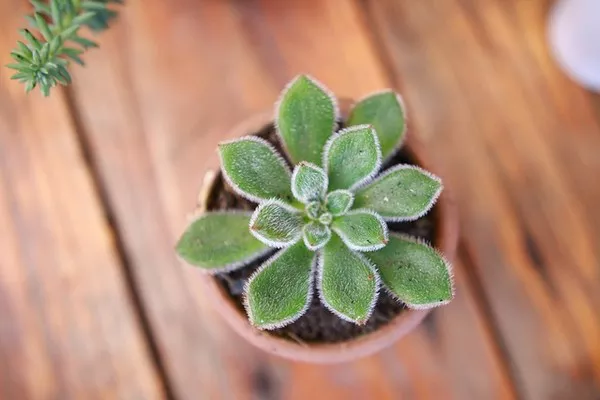Succulent plants have become increasingly popular among plant enthusiasts for their unique appearance and low-maintenance care. However, if you’re a cat owner, it’s essential to choose your succulents carefully, as some can be toxic to our feline friends. In this article, we’ll explore the world of succulent plants and identify which ones are safe for cats.
Understanding the Appeal of Succulents
Succulent plants are renowned for their striking appearance and adaptability to a wide range of environments. Their thick, fleshy leaves store water, allowing them to survive in arid conditions and thrive in homes with minimal care. Succulents come in various shapes, sizes, and colors, making them a popular choice for both novice and experienced plant enthusiasts.
However, the very features that make succulents so appealing to humans can pose a danger to cats. Many succulents are toxic to our feline companions when ingested, causing a range of health issues. To ensure the safety and well-being of your cat, it’s crucial to select cat-friendly succulents for your indoor or outdoor garden.
Common Toxic Succulents
Before diving into the cat-friendly succulents, it’s essential to understand which succulent species are toxic to cats. Some of the most common toxic succulents include:
Euphorbia Species: Euphorbias, such as the popular Euphorbia milii (Crown of Thorns), can cause severe gastrointestinal upset and skin irritation in cats.
Kalanchoe Species: Kalanchoe plants, known for their vibrant flowers, contain compounds that are toxic to cats and can lead to vomiting and diarrhea.
Aloe Vera: While Aloe vera is a versatile plant with many medicinal uses, it can cause gastrointestinal discomfort in cats when ingested.
Jade Plant (Crassula ovata): The Jade plant, commonly found in homes, is mildly toxic to cats and can cause vomiting and depression.
Snake Plant (Sansevieria trifasciata): Snake plants, although not as toxic as some other succulents, can still cause discomfort and gastrointestinal issues in cats.
String of Pearls (Senecio rowleyanus): This popular hanging succulent contains compounds that are harmful to cats if consumed.
Cat-Friendly Succulents
Now that we’ve identified some of the toxic succulents to avoid, let’s focus on the cat-friendly succulents that can safely coexist with your feline companion. These succulents are not only visually appealing but also non-toxic to cats, making them ideal choices for cat-friendly gardens.
Hens and Chicks (Sempervivum tectorum): Hens and Chicks are hardy succulents with rosette-shaped clusters of leaves. They are safe for cats and come in various colors, making them an excellent addition to your garden.
Burro’s Tail (Sedum morganianum): This trailing succulent, with its cascading stems and plump leaves, is non-toxic to cats and can be grown both indoors and outdoors.
Echeveria Species: Echeverias are a diverse group of succulents known for their symmetrical rosettes. Most varieties are safe for cats, including Echeveria elegans (Mexican Snowball).
Christmas Cactus (Schlumbergera): Despite its name, the Christmas Cactus is not a true cactus. It is safe for cats and produces beautiful, colorful blooms during the holiday season.
Haworthia Species: Haworthias are small, compact succulents with distinctive white stripes or spots on their leaves. They are non-toxic to cats and are suitable for indoor cultivation.
Zebra Plant (Haworthiopsis attenuata): Zebra Plants are another cat-friendly succulent variety, characterized by their striking dark green leaves with white stripes.
Pilea (Pilea cadierei): Pilea, also known as the Aluminum Plant, features attractive foliage with silver or aluminum-like markings and is safe for cats.
Stonecrop (Sedum spp.): Sedums come in various forms and are generally safe for cats. They are drought-tolerant and can thrive in outdoor rock gardens.
African Violet (Saintpaulia): While not a succulent, African Violets are safe for cats and offer colorful blooms that can brighten up your home.
Society Garlic (Tulbaghia violacea): Society Garlic is a cat-friendly herbaceous plant that not only adds beauty to your garden but also repels pests with its garlic scent.
Maintaining a Cat-Friendly Succulent Garden
Creating a cat-friendly succulent garden involves more than just selecting the right plants. Here are some tips to ensure the safety and well-being of your feline friend:
Placement: Keep toxic succulents out of your cat’s reach or opt for indoor plants in elevated containers to prevent access.
Monitoring: Pay attention to your cat’s behavior around plants. If you notice any signs of nibbling or curiosity, consider moving the plants to a more secure location.
Training: Train your cat to avoid plants by using deterrents or providing alternative sources of entertainment.
Regular Pruning: Trim any damaged or overhanging leaves to discourage chewing.
Consult a Veterinarian: If you suspect your cat has ingested a toxic plant, contact your veterinarian immediately for guidance.
Conclusion
Succulent plants can be a delightful addition to your home or garden, but it’s essential to prioritize the safety of your feline companions. By selecting cat-friendly succulents and taking precautions to prevent access to toxic varieties, you can create a beautiful and harmonious environment where both your succulents and your cats can thrive. Enjoy the aesthetic pleasure and low-maintenance care of succulents while ensuring the health and happiness of your beloved pets.


